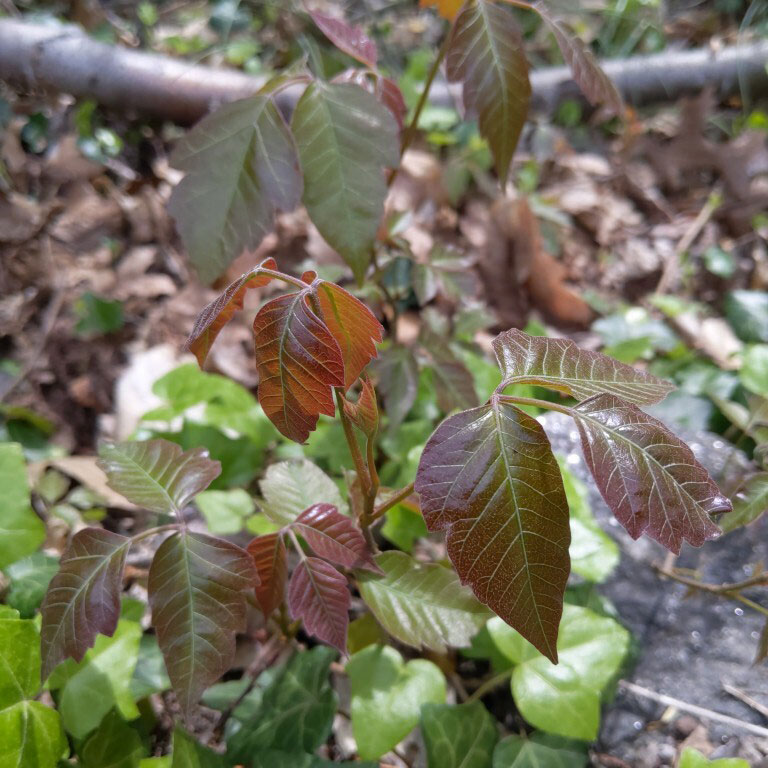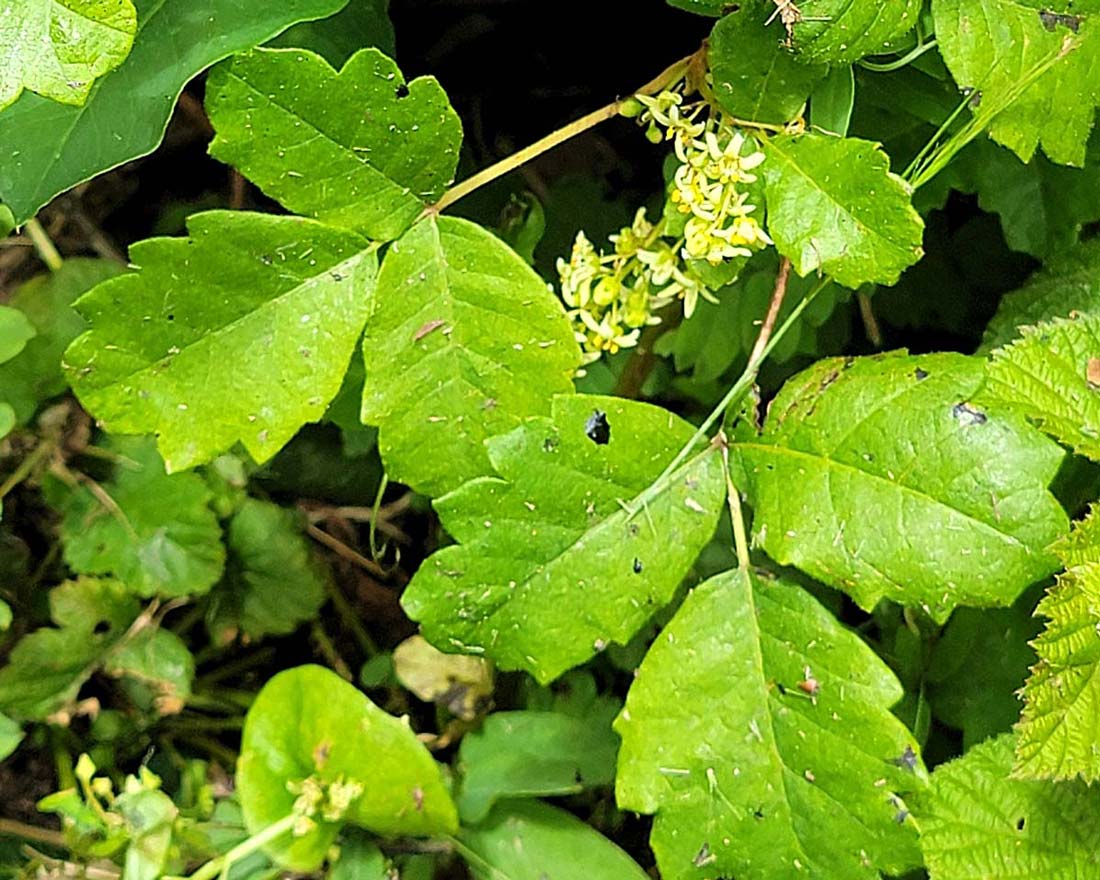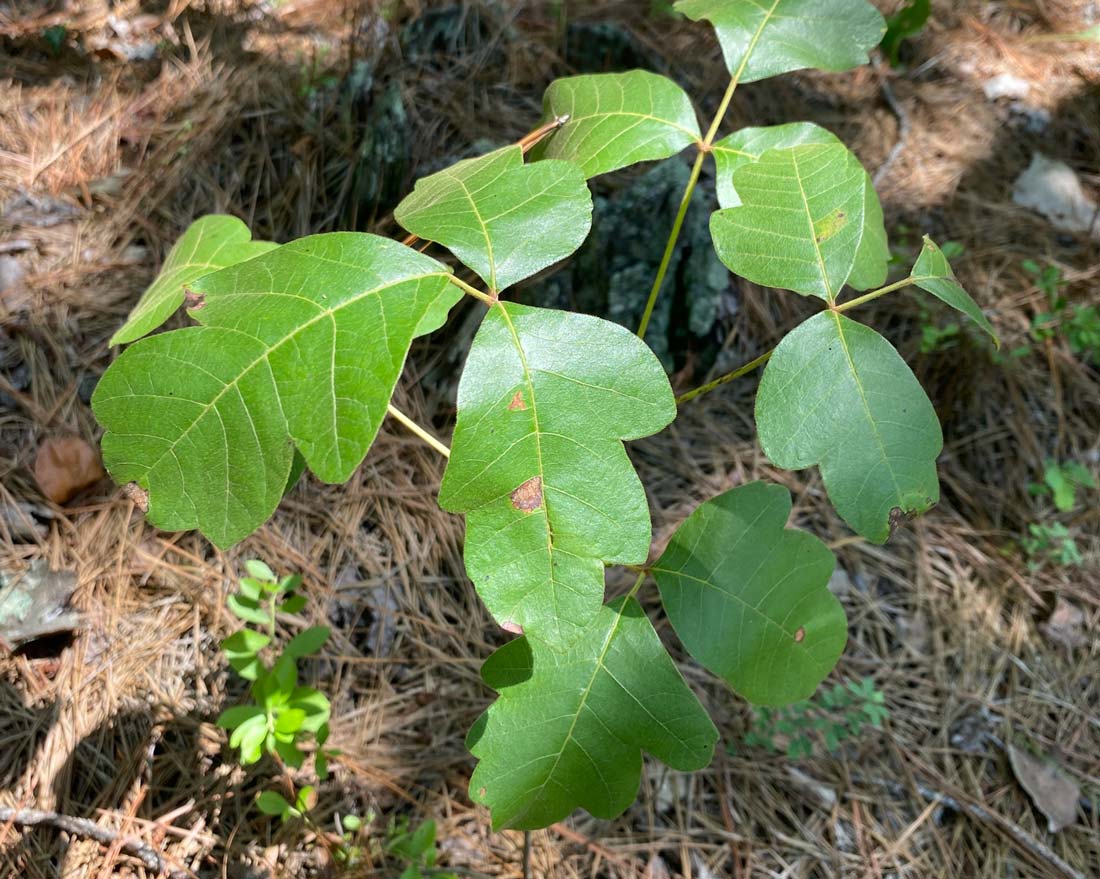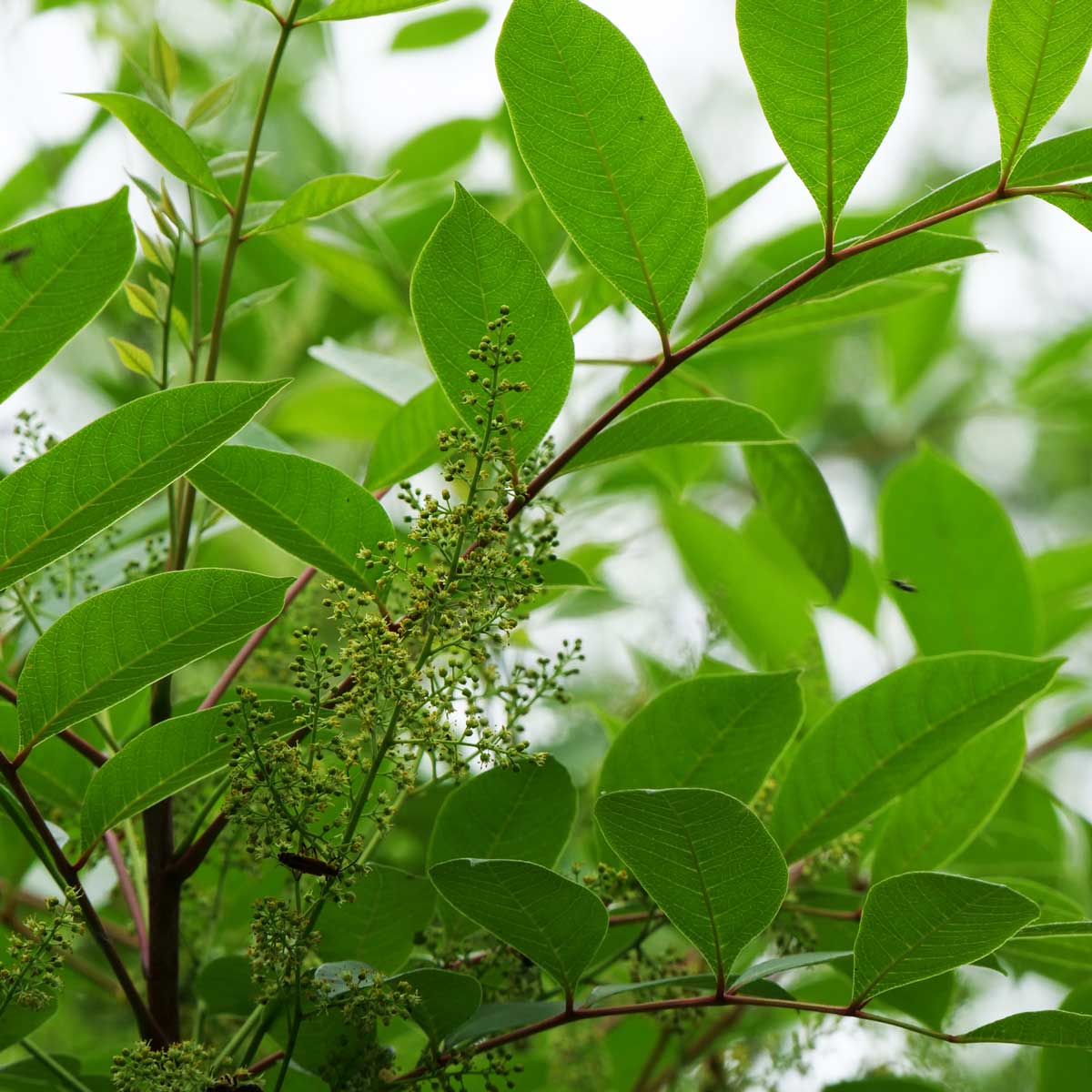Weeds that Cause Skin Rashes
Learn how to avoid trouble with rash-causing weeds, including resources for identifying and controlling them.
Three plants you really don’t want to touch for their rash-causing ability are poison ivy and two of its lesser-known cousins: poison oak and poison sumac. Here's a guide to help you deal with these troublesome plants, including little-known facts, and key tips to identify and remove them.
Knowing these six often-misunderstood factoids about poison ivy, poison oak, and poison sumac can help you head off trouble:
Some people think that it’s just the leaves of these plants that will cause skin rashes.
The truth is that the urushiol oil is in all plant parts, so it’s possible to get a rash from touching the flowers, fruits, stems, and even roots.
Urushiol oil easily transfers from plants to objects to people – including tools, clothing, shoe bottoms, pets, even stray soccer balls retrieved from a weedy area.
It’s possible to get a rash without ever touching or even seeing a poison ivy/oak/sumac plant.
One preventive step is keeping the yard as weed-free as possible. Others include washing clothes immediately after working outside; bathing pets and washing objects that have gone into untended areas; wearing protective creams such as Ivy Block, Tecnu, Multi-Shield, or buji Block when working outside, and washing exposed skin ASAP with soap and water if you suspect you’ve contacted these plants or something that has.
Rashes usually can be stopped if you wash within 15 minutes of contact.
Urushiol oil remains viable even in winter-dormant plants and soon after plants have died.
That means you can get a rash by pulling leafless vines in winter or handling plants after you’ve killed them with a weed-killer. Some people have had their worst rashes in winter.
Urushiol oil can remain rash-causingly viable for as long as five years after plants are dead.
About 85 percent of the population gets rashes from poison ivy/oak/sumac.
Some people are more sensitive than others, with ages 5 to 20 being the most sensitive age range. Sensitivity tends to lessen from the 30s on.
However, just because you one day touch poison ivy/oak/sumac and don’t get a rash doesn’t mean you’re now safe. You could get a rash next touch – especially if you get more oil on your skin.
It’s also possible for people who never got a rash before to suddenly get one in older age.
You can’t build immunity by eating poison ivy/oak/sumac leaves either. That’s a dangerous myth that could cause a serious rash in your throat.
One of the worst ways to tackle these rash-causing plants is to cut them down with a string trimmer. That spews oil, throwing it on your clothes and possibly getting it in your eyes or nose.
Worst of all is burning yanked or dead poison ivy/oak/sumac plants. Urushiol oil gets in the smoke, and if that’s breathed, a very painful and possibly even fatal rash can affect your lung lining.
Never mow, weed-whack, or burn these plants – dead or alive.
You won’t get a rash by touching someone’s rash or blisters, which typically occur two to three days after oil exposure. However, there’s an outside chance you could get a rash if the person hasn’t washed oil from the skin.
The same goes for spreading the rash around your body. The fluid in the rash won’t spread the reaction, but any left-over oil could.

New leaves of poison ivy in spring. iNaturalist
Poison ivy is the most familiar of this plant family (Toxicodendron) that contains a severely skin-irritating oil called urushiol.

Pacific poison oak. iNaturalist

Atlantic poison oak. iNaturalist

Poison Sumac. iNaturalist
Existing plants will have to be cut down, pulled out, or sprayed with herbicides. Be sure to cover all skin before touching potentially rash-causing weeds. Be sure to wear gloves, protective clothing, and eyewear while handling plants. Barrier skin creams that create a protective barrier to shield the skin from plant-oil contact may help prevent a reaction. Examples include Ivy Block, Multi-Shield and Buji Block.
If possible remove plants with their roots when they are young and more shallowly rooted. For more established plants, repeated cutting and digging of established plants will sap energy and eventually kill them. Cut the vine or shrub close to the ground and immediately apply an herbicide to the fresh cut with a brush. Any regrowth can be treated with an herbicide, applying to individual leaflets.
Place cut portions of plants in a plastic bag and dispose of it. Take precautions when removing dead, or leafless poison plants in winter. All parts of the plant contain urushiol, and the oil continues to cause rashes for years after a plant has died.
After brushing against or handling plants, wash the urushiol off your skin, clothing, and any tools or equipment that’s been in contact with the plant.
Wash skin with soap and cool running water as soon as possible afterward. Never wash skin that has come into contact with poison ivy, oak or sumac with hot water. Hot water opens the pores in your skin making it easier for the urushiol to penetrate deeper into your skin.
Wash all gloves and garments in very hot water separately from a general laundry load to remove the rash-causing oil from the fabric. Clean contaminated tools thoroughly with rubbing alcohol or soap and water.